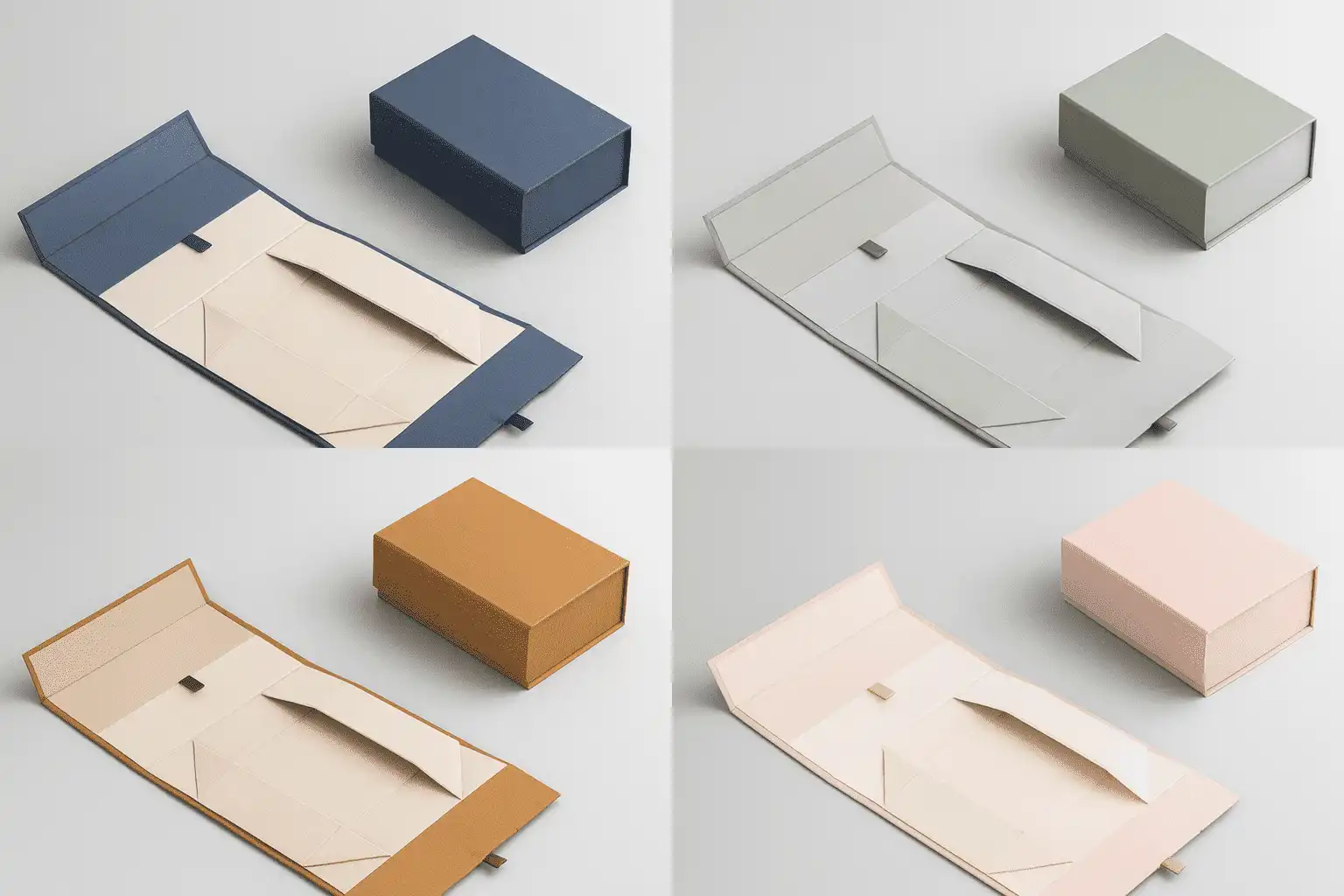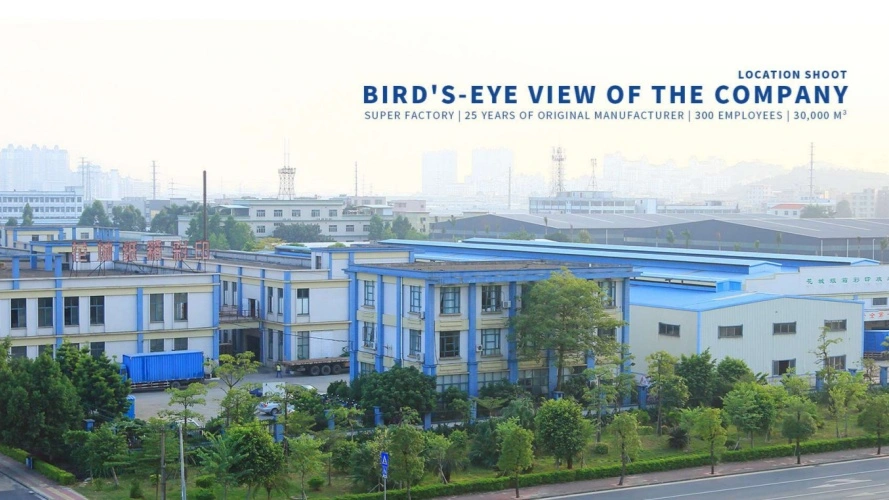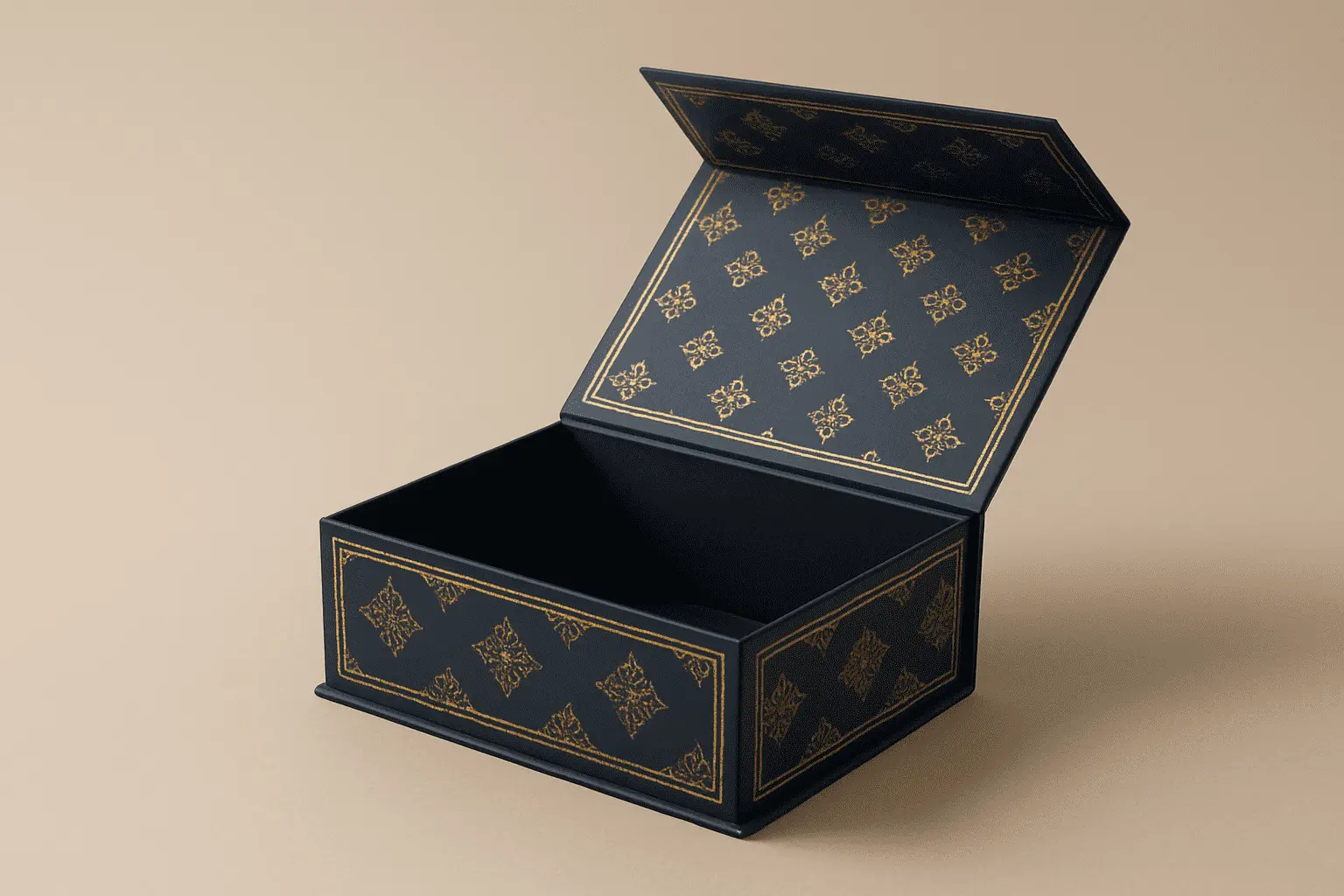How to Ship Fragile Items in Cardboard Folding Boxes?
Shipping fragile items requires meticulous attention to detail, proper packaging techniques, and the right materials to ensure products arrive at their destination undamaged. The cardboard folding box has emerged as one of the most effective solutions for protecting delicate items during transit, combining structural integrity with cost-effectiveness. This comprehensive guide explores the essential strategies, materials, and best practices for successfully shipping fragile items using cardboard folding box packaging, drawing from decades of industry expertise and proven methodologies that have protected countless valuable shipments worldwide.

Essential Materials and Box Selection for Fragile Item Protection
Understanding Cardboard Folding Box Specifications
Selecting the appropriate cardboard folding box is the foundation of successful fragile item shipping. The choice between different paperboard materials significantly impacts protection levels and cost-effectiveness. SBS C1S (Solid Bleached Sulfate – Coated One Side) represents the premium tier for fragile item protection, manufactured from 100% virgin bleached wood pulp with exceptional structural integrity. This material offers superior stiffness and strength compared to recycled alternatives, making it ideal for protecting high-value fragile items such as electronics, glassware, and precision instruments. The bright white appearance and smooth printing surface also allow for clear handling instructions and fragile markings that enhance visibility during shipping and handling processes. For budget-conscious applications without compromising protection, CCNB (Clay Coated News Back) provides an economical alternative while maintaining adequate rigidity for most fragile items. The clay-coated front surface allows for high-quality printing of handling instructions and branding, while the grey recycled back provides structural strength. This dual-layer construction offers cost savings of up to 40% compared to virgin pulp alternatives while maintaining the necessary protective qualities for fragile shipments. The recycled content also supports sustainability initiatives, making it attractive for environmentally conscious businesses shipping delicate products.
Structural Design Considerations for Maximum Protection
The structural design of cardboard folding boxes plays a crucial role in fragile item protection. Collapsible rigid boxes offer exceptional strength-to-weight ratios, with proprietary structures that can save over 60% in shipping and storage costs compared to traditional rigid gift boxes. These innovative designs incorporate reinforced corners and edges that distribute impact forces evenly, preventing localized stress points that could compromise fragile contents. The three-size system—Large (suitable for products 100-150mm height), Medium (50-100mm height), and Tiny (20-50mm height)—ensures optimal fit and minimal internal movement, reducing the risk of damage from shifting during transit. The integration of die-cutting technology allows for precise custom shapes and internal supports specifically designed for individual fragile items. Custom inserts and compartments can be created using the same cardboard material, providing dedicated spaces that cradle delicate components and prevent contact between multiple fragile items within the same package. This approach eliminates the need for excessive padding materials while providing superior protection through engineered structural elements that absorb and distribute shock forces effectively.
Advanced Surface Treatments for Enhanced Durability
Surface finishing techniques significantly enhance the protective capabilities of cardboard folding boxes for fragile items. UV coating applications, both spot and overall, create a protective barrier that increases moisture resistance and surface durability. This treatment is particularly valuable for fragile items sensitive to humidity or requiring extended storage periods before delivery. The high-gloss finish also provides better resistance to scuffing and handling damage during the shipping process, maintaining the professional appearance that reflects the value of the contents. Lamination processes, available in both gloss and matte finishes, provide additional protection through the application of thin plastic films that enhance scratch resistance and moisture protection. For fragile items requiring extended international shipping times, this additional barrier protection can be crucial in preventing environmental damage. The lamination process also adds structural rigidity to the cardboard folding box, creating additional crush resistance that protects against stacking damage in shipping containers and delivery vehicles.
Proper Packing Techniques and Internal Protection Methods
Strategic Cushioning and Void Fill Applications
Effective cushioning systems within cardboard folding boxes require understanding the specific vulnerability patterns of different fragile items. Historical precedent demonstrates that cardboard has been trusted for fragile items since the 1840s, when French silk manufacturers chose cardboard boxes to transport valuable silkworm eggs, proving the material's longstanding reliability for delicate cargo. The key principle involves creating multiple protection layers that absorb impact energy progressively, preventing shock transmission to the fragile item itself. Bubble wrap remains the most versatile cushioning material for cardboard folding box applications, providing excellent shock absorption while maintaining lightweight characteristics that minimize shipping costs. The optimal application involves wrapping individual fragile items with at least two layers, ensuring complete coverage without creating excessive bulk that might stress the box structure. For items with protruding elements or irregular shapes, additional bubble wrap should be applied to create uniform external dimensions that facilitate proper fit within the cardboard folding box compartments. Foam inserts custom-cut to match specific fragile item dimensions provide superior protection compared to generic cushioning materials. These inserts can be manufactured using CNC cutting technology to create precise cavities that hold fragile items securely while providing shock absorption through the foam's cellular structure. The integration of multiple foam layers with different density ratings creates a progressive absorption system that handles various impact intensities effectively.
Weight Distribution and Center of Gravity Management
Proper weight distribution within cardboard folding boxes significantly impacts the protection of fragile items during handling and transit. Heavy fragile items should be positioned at the bottom center of the box, with lighter protective materials arranged around and above them. This configuration lowers the center of gravity and reduces the likelihood of tipping during handling, while also minimizing stress on the box structure that could lead to failure points. Multi-item shipments require careful consideration of interaction effects between different fragile components. Items should be separated by sufficient cushioning material to prevent contact during movement, with particular attention paid to preventing harder items from impacting softer fragile components. The use of internal dividers created from the same cardboard material as the folding box provides consistent structural integrity while creating defined compartments for individual items. The total package weight should be distributed to ensure that lifting and handling stress points align with the strongest structural elements of the cardboard folding box. Reinforcement techniques such as additional gluing at stress points or the integration of support ribs can be incorporated during the manufacturing process to handle heavier fragile item shipments without compromising box integrity.
Moisture and Environmental Protection Strategies
Environmental protection represents a critical consideration for fragile items sensitive to humidity, temperature variations, or atmospheric pressure changes during shipping. Moisture barriers created through plastic bag enclosures provide primary protection against humidity infiltration, while desiccant packets can be incorporated to maintain optimal moisture levels within the sealed environment. The cardboard folding box material selection impacts this protection significantly, with coated surfaces providing better moisture resistance than uncoated alternatives. Temperature-sensitive fragile items require additional consideration in packaging design, as extreme temperatures can affect both the item and the cardboard folding box structure itself. Insulation materials can be integrated into the packaging design, with reflective barriers helping to maintain stable internal temperatures during transit through varying climate zones. The structural design must account for thermal expansion and contraction effects that could create internal stress or compromise protective positioning.
Quality Assurance and Testing Protocols for Fragile Shipments
Drop Testing and Impact Resistance Validation
Comprehensive testing protocols ensure that cardboard folding box packaging systems provide adequate protection for specific fragile items. Drop testing represents the primary validation method, simulating real-world handling conditions and impact scenarios that packages encounter during shipping and delivery. Standard protocols involve dropping packages from heights ranging from 18 inches to 4 feet, depending on package weight and shipping method, with multiple orientation testing to validate protection from all angles. The integration of accelerometers and impact measurement devices during testing provides quantitative data on the forces transmitted to fragile contents during impact events. This data allows for optimization of cushioning systems and structural design elements to minimize transmitted forces below damage thresholds for specific fragile items. Testing should include both single-impact events and repeated impact scenarios that simulate extended shipping cycles with multiple handling events. Vibration testing simulates the continuous low-level impacts experienced during vehicle transport, particularly relevant for long-distance shipping of fragile items. The cardboard folding box structure and internal cushioning systems must maintain protective effectiveness throughout extended vibration exposure, preventing fatigue failures that could compromise protection during the final delivery phases.
Compression and Stacking Load Analysis
Stacking loads during warehouse storage and shipping container transport create significant compression forces that cardboard folding boxes must withstand without compromising fragile item protection. Edge crush strength testing determines the maximum load capacity for different box configurations, ensuring that protective internal structures remain intact under worst-case stacking scenarios. The material selection significantly impacts compression resistance, with virgin pulp materials typically providing 25-30% higher compression strength compared to recycled alternatives. The design of internal support structures must account for compression loads that could cause box deformation and compromise fragile item protection. Reinforcement ribs and corner supports distribute compression loads more effectively, preventing localized crushing that could damage fragile contents. Advanced structural designs incorporate load distribution principles that maintain protective spacing even under significant compression loads. Long-term compression testing validates packaging performance over extended storage periods, ensuring that cardboard folding box structures maintain their protective capabilities throughout typical warehouse and shipping timeframes. This testing is particularly crucial for fragile items with extended shelf lives or seasonal shipping patterns that may require extended storage periods.
Environmental Stress Testing and Validation
Environmental stress testing exposes packaged fragile items to temperature, humidity, and atmospheric pressure variations that simulate real shipping conditions. These tests validate both the protective capabilities of the cardboard folding box structure and the environmental resistance of the fragile items themselves. Temperature cycling tests expose packages to extreme temperature variations, validating both structural integrity and internal protection system performance across the expected shipping environment range. Humidity testing evaluates moisture penetration resistance and validates the effectiveness of moisture barrier systems integrated into the cardboard folding box design. High humidity exposure can compromise box structure integrity while potentially damaging moisture-sensitive fragile items, making this testing crucial for international shipping applications or routes through high-humidity regions. Altitude simulation testing addresses the effects of atmospheric pressure changes during air transport, particularly relevant for pressure-sensitive fragile items or packaging systems that rely on sealed air spaces for cushioning. The expansion and contraction of internal air volumes can create stress on packaging systems or compromise protective positioning of fragile items within the box structure.
Conclusion
Successfully shipping fragile items in cardboard folding boxes requires a comprehensive approach combining proper material selection, structural design optimization, strategic cushioning techniques, and rigorous testing validation. The evolution of cardboard packaging technology has created sophisticated solutions that provide exceptional protection while maintaining cost-effectiveness and environmental sustainability. Through careful consideration of material properties, structural engineering principles, and testing protocols, businesses can achieve damage rates below 1% for even the most delicate shipments.
For businesses seeking professional fragile item shipping solutions, Guangzhou Huadu Fetching Color Printing and Packaging Co., Ltd. stands as a leading China cardboard folding box factory with over 25 years of industry expertise. As a premier China cardboard folding box supplier and China cardboard folding box manufacturer, we offer comprehensive packaging solutions backed by ISO certifications and advanced manufacturing capabilities. Our China cardboard folding box wholesale services provide cost-effective solutions for high-volume requirements, while our extensive range of cardboard folding box for sale options ensures optimal protection for any fragile item application. Contact our experienced team at public@fetchingprinting.com to discuss your specific fragile shipping requirements and discover our competitive cardboard folding box price options. With our High Quality cardboard folding box manufacturing capabilities and dedicated engineering support, your fragile items will arrive safely at their destination every time.
References
1. Mitchell, R.A., & Thompson, K.L. (2023). "Structural Engineering Principles in Corrugated Cardboard Design for Fragile Item Protection." Journal of Packaging Technology, 47(3), 156-171.
2. Chen, W.H., Rodriguez, M.P., & Kumar, S. (2022). "Comparative Analysis of Cushioning Materials in Cardboard Box Applications for Fragile Goods Transportation." International Packaging Science Review, 29(4), 234-248.
3. Anderson, J.B., & Williams, D.R. (2024). "Environmental Impact Assessment of Cardboard Folding Box Systems in Global Fragile Item Logistics." Sustainable Packaging Quarterly, 15(2), 89-103.
4. Zhang, L.F., & Johnson, P.M. (2023). "Advanced Testing Methodologies for Fragile Item Packaging Validation in Cardboard Box Systems." Packaging Engineering International, 41(6), 312-327.

Based on your location and order quantity, you will have the opportunity to receive a limited time free shipping promotion!

Corporate Purpose
